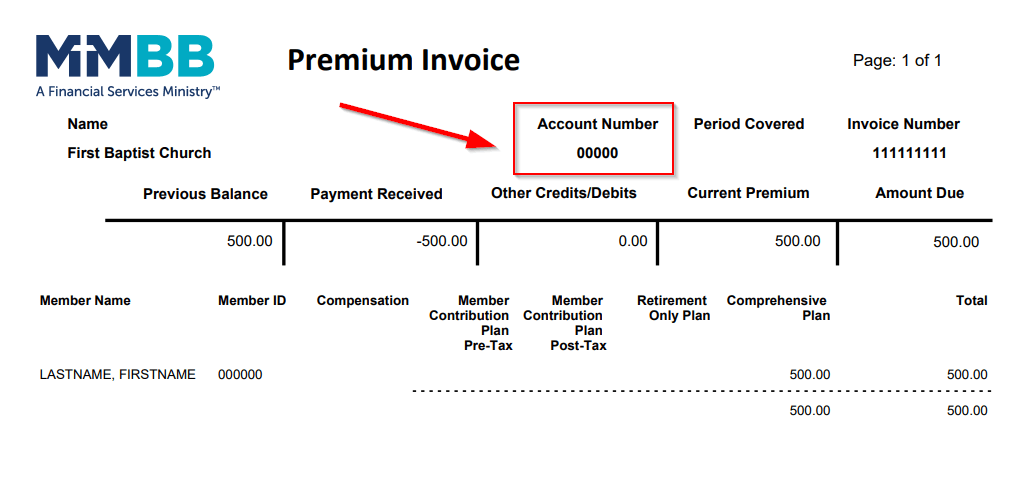The Markets (as of market close October 31, 2025)
Wall Street experienced notable volatility in October, only to see each of the benchmark indexes listed here close the month higher. The NASDAQ led the benchmarks, reaching a new record high. This surge was heavily influenced by a surge in AI stocks. Several major tech firms posted favorable corporate earnings data for the third quarter. Overall, the percentage of S&P 500 companies reporting positive earnings surprises, at 83.2% through quarter three, was above the long-term average. Among the market sectors, information technology, health care, and consumer discretionary moved higher, while financials and consumer staples were among the sectors that underperformed.
October saw the U.S. economy face slowing job growth, elevated inflation, and a significant monetary policy pivot by the Federal Reserve, which cut interest rates in October for a second time this year.
The government shutdown hampered the release of important information, making it difficult to gauge the state of the economy. For instance, labor market data is lacking, as is the latest information on gross domestic product (GDP).
The U.S. bond market in October 2025 was primarily driven by Federal Reserve policy, inflation data, slowing labor market growth, and the impact of a U.S. government shutdown. Ten-year Treasury yields generally moved lower for the month, dropping by about 15.0 basis points from the start of October, although they bounced back somewhat toward the end of the month.
The month of October 2025 was largely characterized by a bearish trend for crude oil, with prices on track for a third consecutive monthly decline. Oversupply concerns played a large part in the downward movement of crude oil prices. The retail price of regular gasoline was $3.035 per gallon on October 27, $0.083 below the price a month earlier but $0.062 lower than the price a year ago.
Stock Market Indexes
MARKET SUMMARY
| MARKET/INDEX |
2024 CLOSE |
PRIOR MONTH |
AS OF 10/31 |
MONTHLY CHANGE |
YTD CHANGE |
| DJIA |
42,544.22 |
46,397.89 |
47.562.87 |
2.51 |
11.80% |
| NASDAQ |
19,310.79 |
22,660.01 |
23,724.96 |
4.70% |
22.86% |
| S&P 500 |
5,881.63 |
6,688.46 |
6,840.20 |
2.27% |
16.30% |
| RUSSELL 2000 |
2,230.16 |
2,436.48 |
2,479.38 |
1.76% |
11.17% |
| GLOBAL DOW |
4,863.01 |
5,5917.39 |
6,022.58 |
1.78% |
23.84% |
| FED. FUNDS |
4.25%-4.50% |
4.00%-4.25% |
3.75%-4.00% |
-25 bps |
-50 bps |
| 10-YEAR TREASURIES |
4.57% |
4.14% |
4.10% |
-4 bps |
-47 bps |
| US DOLLAR-DXY |
108.44 |
97.82 |
99.72 |
1.94% |
-8.04% |
| CRUDE OIL-CL=F |
$71.76 |
$62.51 |
$60.88 |
-2.61% |
-15.16% |
| GOLD-GC=F |
$2,638.50 |
$3,882.60 |
$4,013.40 |
3.37% |
52.11% |
Chart reflects price changes, not total return. Because it does not include dividends or splits, it should not be used to benchmark performance of specific investments.
Latest Economic Reports
The government shutdown impacted the flow of economic data. However, information from private-sector sources was kept current, for the most part. The following summaries are based on the most recent data available as of October 31, 2025.
- Employment: The latest employment report for August showed the labor market continued to weaken. Job growth ticked up 22,000 last month following an upwardly revised July increase of only 79,000. However, employment for June was also revised down by 27,000, from 14,000 to -13,000. With these revisions, employment in June and July combined was 21,000 lower than previously reported. In August, the unemployment rate ticked up 0.1 percentage point to 4.3%. The number of unemployed persons in August, at 7.4 million, was 148,000 above the July estimate. The number of long-term unemployed (those jobless for 27 weeks or more) increased by 104,000 to 1.9 million. These individuals accounted for 25.7% of all unemployed persons. The labor force participation rate in August rose 0.1 percentage point from July to 62.3%. The employment-population ratio in August, at 59.6%, was unchanged from the July estimate. Average hourly earnings increased by $0.10, or 0.3%, to $36.53 in August. Over the last 12 months, average hourly earnings rose by 3.7%, 0.2 percentage point below the 12-month average for the period ended in July. The average workweek in August was 34.2 hours for the third month in a row.
- There were 218,000 initial claims for unemployment insurance for the week ended September 20, 2025. During the same period, the total number of workers receiving unemployment insurance was 1,926,000. A year ago, there were 221,000 initial claims, while the total number of workers receiving unemployment insurance was 1,831,000.
- FOMC/interest rates: In a 10-2 decision, the Federal Open Market Committee cut the fed funds target rate range by 25 basis points to 3.75%-4.00%. This is the lowest level since 2022. Despite the lack of economic data following the government shutdown, the Committee reached its policy decision, noting that downside risks to employment rose in recent months, while inflation remained somewhat elevated.
-
GDP/budget: The economy, as measured by gross domestic product, advanced at an annualized rate of 3.8% in the second quarter, rebounding from a 0.6% decrease in the first quarter of 2025. Consumer spending, as measured by personal consumption expenditures, helped propel the second-quarter increase, climbing 2.5% after ticking up 0.6% in the first quarter. Spending rose for both services (2.6%) and goods (2.2%). After surging 38.0% in the first quarter, imports (which are a negative in the calculation of GDP) fell 29.3% in the second quarter. However, exports also declined in the second quarter, falling 1.8%, offsetting a 0.2% advance in the first quarter. Private investment declined 13.8% in the second quarter, cutting into the 23.3% gain in the prior quarter.
-
September, the last month of fiscal year 2025, saw the federal budget register a surplus of $198 billion. The September surplus is partly attributable to the fact that outlays for military active duty and retirement, veterans benefits, Supplemental Security Income, and Medicare payments to health maintenance organizations and prescription drug plans accelerated into August, because September 1, 2025, the normal payment date, fell on a non-business day. September receipts were $544 billion. Customs duties (e.g., tariffs) added $30 billion to receipts in September. Government outlays in September were $346 billion. The deficit for fiscal year 2025, at $1,775 billion, was below the $1,817 billion deficit from the previous fiscal year. For fiscal year 2025, individual income tax receipts added up to $2,656 billion, while outlays for Social Security totaled $1,581 billion.
-
Inflation/consumer spending: According to the latest Personal Income and Outlays report, personal income and disposable (after-tax) personal income each rose 0.4% in August after increasing 0.4% and 0.3%, respectively, in July. Consumer spending increased 0.6% in August after rising 0.5% the previous month. In August, the PCE price index rose 0.3% after increasing 0.2% in July. Core prices advanced 0.2% last month, unchanged from the July estimate. The PCE price index rose 2.7% since August 2024, while core prices increased 2.9% over the same period. Over the past 12 months ended in August, prices for goods increased 0.9% and prices for services rose 3.6%. Food prices increased 2.2%, while energy prices decreased 0.1%.
-
The Consumer Price Index rose 0.3% in September after increasing 0.4% in August. Over the 12 months ended in September, the CPI rose 3.0%, 0.1 percentage point higher than the 12-month period ended in August. Core prices rose 0.2% in September and 3.0% since September 2024. The primary factor in the September increase was a 1.5% rise in energy prices, which was driven by a 4.1% jump in prices for gasoline. Prices for shelter rose 0.2% in September, while food prices rose 0.2%. Over the last 12 months ended in September, food prices increased 3.1%, energy prices rose 2.8%, and shelter prices advanced 3.6%.
-
Prices at the wholesale level have been somewhat unpredictable this year. In August, the Producer Price Index declined 0.1% after advancing 0.7% (revised) in July. Producer prices increased 2.6% for the 12 months ended in August after rising 3.1% for the 12-month period ended in July. Excluding food and energy, producer prices dipped 0.1% in August but increased 2.8% for the year. In August, prices for goods edged up 0.1% from the previous month and 2.1% since August 2024. Last month saw prices for services decline 0.2% after a 0.7% increase in July. Prices for services rose 2.9% for the 12 months ended in August, lower than the 4.0% increase over the 12 months ended in July.
-
Housing: Sales of existing homes increased 1.5% in September and were up 4.1% from a year earlier. The median existing-home price was $415,200 in September, lower than the August price of $422,400 but above the September 2024 estimate of $406,700. Unsold inventory of existing homes in September represented a 4.6-month supply at the current sales pace, up 1.3% from the August total and 14.0% above supply from a year ago. Sales of existing single-family homes rose 1.7% in September and 4.5% from the September 2024 figure. The median existing single-family home price was $420,700 in September ($427,700 in August), higher than the September 2024 estimate of $411,400.
-
Sales of new single-family homes jumped higher in August, exceeding expectations, although inventory of available new homes for sale plunged lower from the previous month. Sales of new single-family homes rose 20.5% in August and were 15.4% above the August 2024 figure. The median sales price of new single-family houses sold in August was $413,500 ($395,100 in July), which was higher than the August 2024 estimate of $405,800. The August average sales price was $534,100 ($478,200 in July), up from the August 2024 average sales price of $475,600. Inventory of new single-family homes for sale in August represented a supply of 7.4 months at the current sales pace, 17.8% below the July estimate of 9.0 months and 9.8% below the August 2024 estimate of 8.2 months.
-
Manufacturing: Industrial production edged up 0.1% in August after decreasing 0.4% in July. Manufacturing output rose 0.2% last month after edging down 0.1% in July. Within manufacturing, the production of motor vehicles and parts increased 2.6% in August, while factory output elsewhere edged up 0.1%. Mining moved up 0.9%, while utilities decreased 2.0%. Total industrial production was up 0.9% since August 2024.
-
New orders for durable goods rose 2.9% in August after decreasing 2.7% in July. Transportation equipment drove the August increase after climbing 7.9%. New orders excluding transportation increased 0.4%. Excluding defense, new orders increased 1.9%. For the 12 months ended in August, durable goods orders advanced 7.1%.
-
Imports and exports: Both import and export prices came in higher than expected in August. Import prices advanced 0.3% following a 0.2% decrease in July. Prices for imports were flat for the 12 months ended in August. Higher prices for nonfuel imports more than offset lower prices for fuel imports in August. Import fuel prices fell 10.1% over the past 12 months. Prices for nonfuel imports advanced 0.4% in August, the largest monthly advance since April 2024. Export prices rose 0.3% in August after rising 0.1% the previous month. Export prices increased 3.4% over the past 12 months, the largest 12-month increase since December 2022.
-
The international trade in goods deficit for August was $85.5 billion, 16.8% under the July estimate. Exports of goods for August dipped 1.3%, while imports of goods declined 7.0%. Over the 12 months ended in August, exports decreased 0.4% and imports fell 4.1%.
-
The latest information on international trade in goods and services, released September 4, saw the goods and services deficit increase 32.5% in July to $78.3 billion. Exports of goods increased 0.3% to $280.5 billion in July. Imports of goods rose 5.9% to $358.8 billion. For the 12 months ended in July 2025, the goods and services deficit increased $154.3 billion, or 30.9%, from the same period in 2024. Exports increased $103.1 billion, or 5.5%. Imports increased $257.5 billion, or 10.9%.
-
International markets: October was a good month for European stock markets, with some indexes reaching record highs during the month. The key drivers in the European stock market centered around AI stocks, positive economic signals, and strong corporate earnings. While eurozone GDP rose 0.2% in the third quarter from the second, Germany and Italy saw little to no growth in the quarter. Stock markets in Asian countries experienced significant volatility, often reacting to developments in U.S.-China trade talks and key economic data. In October, the STOXX Europe 600 Index rose 0.3%; the United Kingdom's FTSE advanced 2.4%; Japan's Nikkei 225 Index jumped 14.5%; and China's Shanghai Composite Index rose 1.9%.
-
Consumer confidence: Consumer confidence fell 1.0 point in October to 94.6 from an upwardly revised 95.6 in September. The Present Situation Index, based on consumers' assessment of current business and labor market conditions, increased 1.8 points to 129.3. The Expectations Index, based on consumers' short-term outlook for income, business, and labor market conditions, decreased 2.9 points to 71.5. The Expectations Index has been below the threshold of 80 (typically signaling a recession ahead) since February 2025.
Eye on the Month Ahead
Last week was marked by the re-opening of the U.S. government after a prolonged shutdown. The end of the government shutdown should result in the release of economic data and reports.
Data sources: Economic: Based on data from U.S. Bureau of Labor Statistics (unemployment, inflation);
U.S. Department of Commerce (GDP, corporate profits, retail sales, housing); S&P/Case-Shiller 20-City Composite Index (home prices); Institute for Supply Management (manufacturing/services). Performance: Based on data reported in WSJ Market Data Center (indexes); U.S. Treasury (Treasury yields); U.S. Energy Information Administration/Bloomberg.com Market Data (oil spot price, WTI Cushing, OK); www.goldprice.org (spot gold/silver); Oanda/FX Street (currency exchange rates). News items are based on reports from multiple commonly available international news sources (i.e., wire services) and are independently verified when necessary with secondary sources such as government agencies, corporate press releases, or trade organizations. All information is based on sources deemed reliable, but no warranty or guarantee is made as to its accuracy or completeness. Neither the information nor any opinion expressed herein constitutes a solicitation for the purchase or sale of any securities, and should not be relied on as financial advice. Forecasts are based on current conditions, subject to change, and may not come to pass. U.S. Treasury securities are guaranteed by the federal government as to the timely payment of principal and interest. The principal value of Treasury securities and other bonds fluctuates with market conditions. Bonds are subject to inflation, interest-rate, and credit risks. As interest rates rise, bond prices typically fall. A bond sold or redeemed prior to maturity may be subject to loss. Past performance is no guarantee of future results. All investing involves risk, including the potential loss of principal, and there can be no guarantee that any investing strategy will be successful.
The Dow Jones Industrial Average (DJIA) is a price weighted index composed of 30 widely traded blue-chip U.S. common stocks. The S&P 500 is a market cap weighted index composed of the common stocks of 500 largest, publicly traded companies in leading industries of the U.S. economy. The NASDAQ Composite Index is a market-value weighted index of all common stocks listed on the NASDAQ stock exchange. The Russell 2000 is a market-cap weighted index composed of 2,000 U.S. small-cap common stocks. The Global Dow is an equally weighted index of 150 widely traded blue-chip common stocks worldwide. The U.S. Dollar Index is a geometrically weighted index of the value of the U.S. dollar relative to six foreign currencies. Market indexes listed are unmanaged and are not available for direct investment.
IMPORTANT DISCLOSURES
Broadridge Investor Communication Solutions, Inc. does not provide investment, tax, legal, or retirement advice or recommendations. The information presented here is not specific to any individual’s personal circumstances.
To the extent that this material concerns tax matters, it is not intended or written to be used, and cannot be used, by a taxpayer for the purpose of avoiding penalties that may be imposed by law. Each taxpayer should seek independent advice from a tax professional based on his or her individual circumstances.
These materials are provided for general information and educational purposes based upon publicly available information from sources believed to be reliable — we cannot assure the accuracy or completeness of these materials. The information in these materials may change at any time and without notice.








